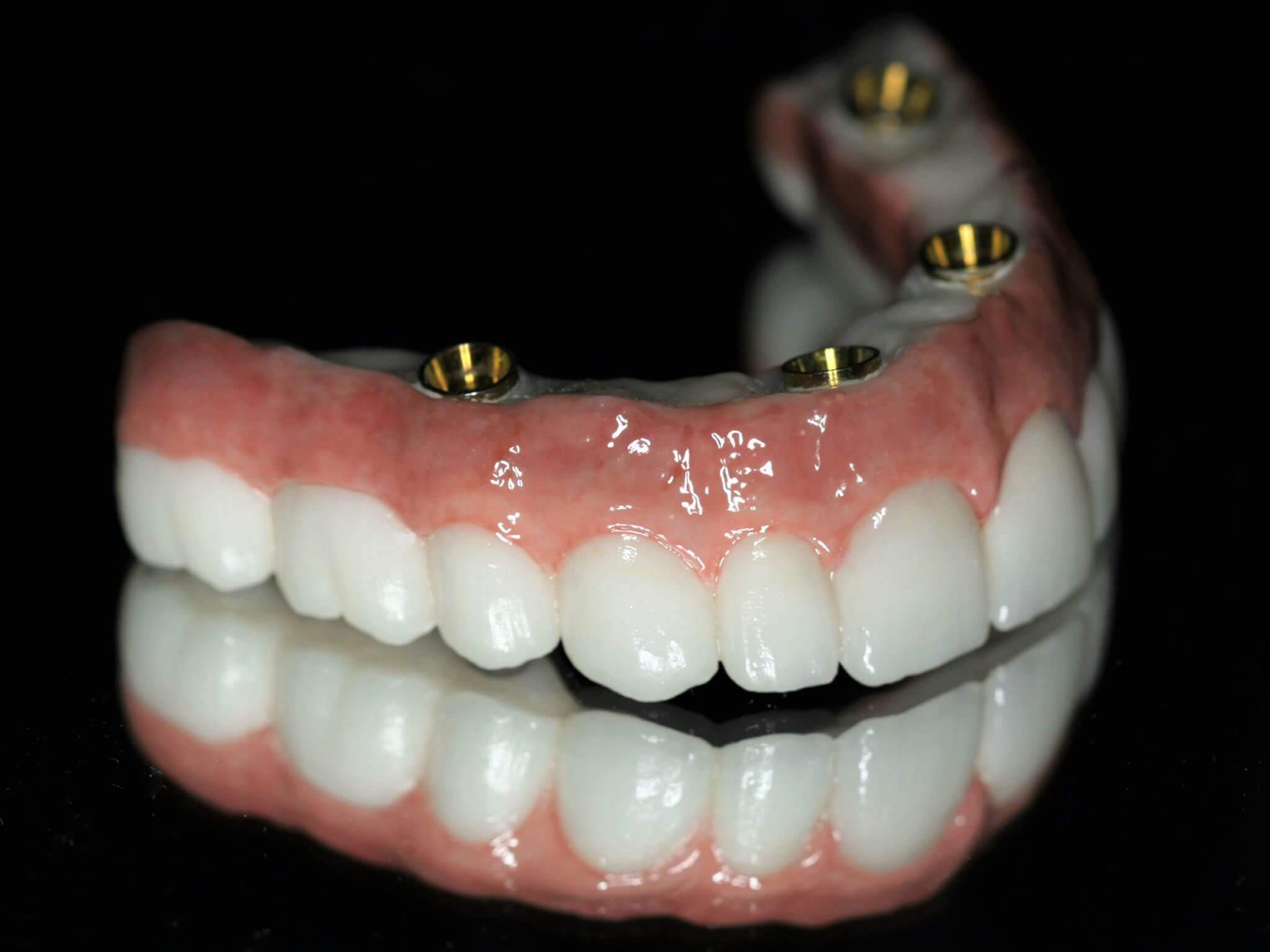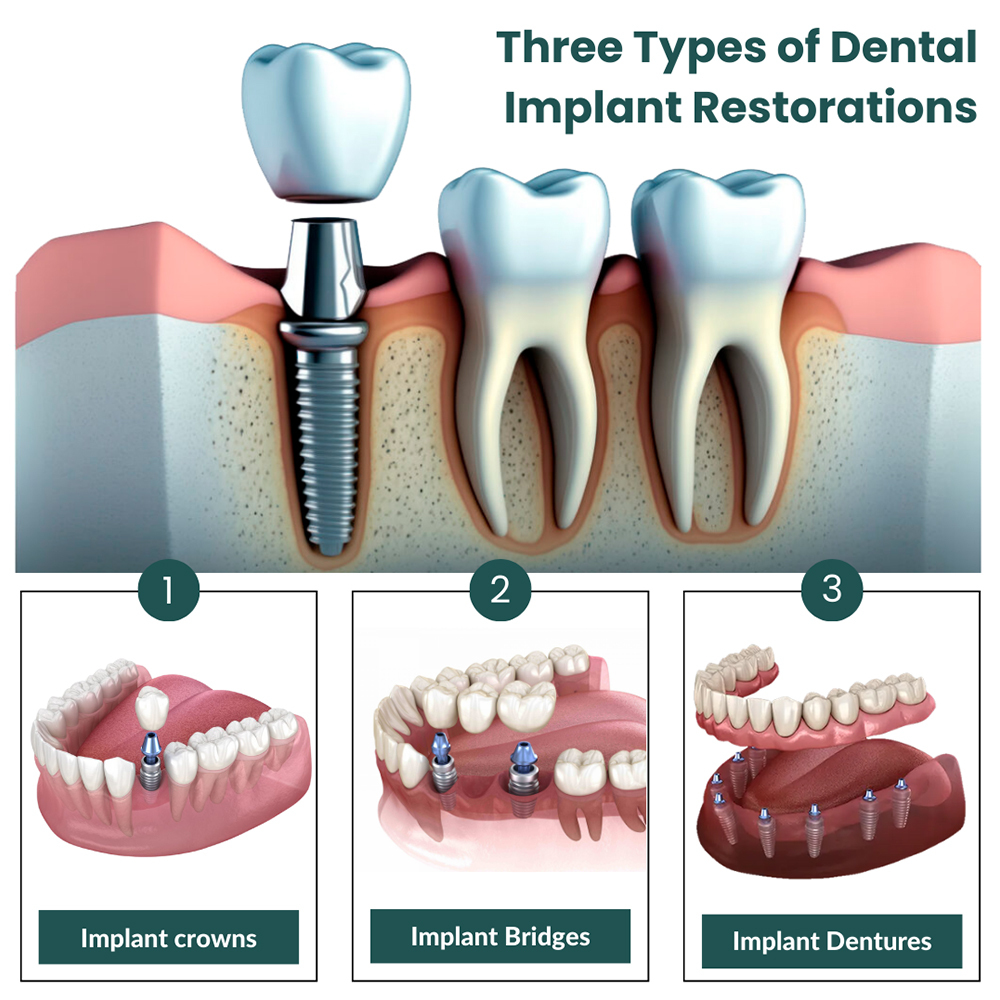The Basic Principles Of Dental Sense
The Basic Principles Of Dental Sense
Blog Article
Dental Sense Things To Know Before You Get This
Table of ContentsNot known Facts About Dental SenseAll about Dental SenseSee This Report on Dental SenseA Biased View of Dental Sense
are clinical tools operatively implanted right into the jaw to restore an individual's ability to chew or their look. They provide support for fabricated (fake) teeth, such as crowns, bridges, or dentures. When a tooth is lost because of injury or condition, an individual can experience problems such as rapid bone loss, defective speech, or changes to eating patterns that lead to discomfort.Oral implant systems contain a dental implant body and dental implant abutment and might likewise consist of a joint fixation screw. Dental veneers cost. The dental implant body is operatively inserted in the jawbone instead of the tooth's root. The dental implant abutment is generally connected to the dental implant body by the abutment fixation screw and prolongs through gum tissues right into the mouth to sustain the connected fabricated teeth
(https://slides.com/dentalsense1)Framework of The Oral Implant System picking oral implants, talk with your dental provider regarding the potential benefits and threats, and whether you are a candidate for the treatment. Things to consider: Your total health is a vital consider establishing whether you are a great candidate for oral implants, for how long it will take to heal, and just how long the implant may remain in location.
Cigarette smoking might affect the recovery process and reduce the long-term success of the dental implant. The recovery process for the implant body may take several months or longer, throughout which time you generally have a momentary abutment in location of the tooth. the dental implant procedure: Very carefully follow the oral hygiene instructions offered to you by your dental copyright.
6 Simple Techniques For Dental Sense
Implant failure can result in the need for another surgery to take care of or change the dental implant system. Recovers the ability to eat Recovers aesthetic look Assists keep the jawbone from shrinking due to bone loss Preserves the health and wellness of the surrounding bone and periodontals Helps maintain nearby (neighboring) teeth stable Boosts lifestyle Damages to bordering natural teeth throughout implant positioning Injury to the surrounding cells throughout surgery, such as sinus opening Injury throughout surgical procedure (as an example, crack of surrounding jawbone) Inadequate function, such as really feeling like the teeth do not attack with each other normally A sensation that the tooth is loose or twisting in area arising from a joint screw loosening Implant body failing (looseness of the implant body) as a result of systemic infection, which might be more probable in individuals with unchecked diabetes mellitus due to local infection in bone and periodontals supporting the dental implant body due to postponed healing, which may be more likely in people who smoke Difficulty cleaning the gums around the implant, resulting in inadequate oral hygiene Without treatment gum illness Post-surgical numbness as a result of nerve impingement or damage Constantly inform health treatment carriers and imaging service technicians that you have dental implants prior to any type of magnetic vibration imaging (MRI) or x-ray treatments.
FDA is not conscious of any damaging occasions reported for MRI or x-ray procedures with dental implants. Dental implants systems are usually constructed from products that adhere to international agreement standards of the International Organization for Standardization (ISO) or ASTM International. These requirements have information of what makes a safe material.

An oral implant is a structure that replaces a missing out on tooth. With screw-like tools, the specialist inserts a dental implant right into the jawbone, and it acts as an anchor for a man-made tooth, called a crown.
Not known Incorrect Statements About Dental Sense
Some individuals are not qualified for oral implant surgical procedure. It is for oral cosmetic surgeons to run on people with: intense illnessuncontrollable metabolic diseasebone or soft cells disease or infectionIf these problems are solved, an individual can have the surgery. In, dental specialists avoid operating on individuals with: If individuals with any one of the above go through dental implant surgical procedure, there is a greater danger of the dental implant stopping working.

Oral implant surgical procedure is a tailored procedure. It's not the same for everyone. However the adhering to gives a basic introduction of what you can expect your dentist, oral surgeon, periodontist or prosthodontist to do: Position the dental implant surgically. Offer you time to recover. Connect the article and last crown, bridge or denture.
Next, your doctor will meticulously web link place the dental implant right into your jaw. If your dental implant is near the front of your mouth, your dental expert will certainly make a momentary tooth for you to use till you recover.
Things about Dental Sense
Your service provider can inform you what to expect in your circumstance. Throughout the recovery stage, your jawbone must fuse to the oral implant. This process, called osseointegration, is crucial for stability and lasting success. This procedure can take anywhere from 3 to nine months. Sometimes, it might take much longer.
As soon as your implant heals, your dental expert can affix the joint (small adapter message) and your final restoration (crown, bridge or denture). This generally takes about one hour to finish and may call for a second minor surgical procedure. You should not feel any kind of pain throughout your dental implant procedure due to the fact that your supplier will certainly utilize medication to numb your gum tissues.
Report this page